Don't wanna be here? Send us removal request.
Text
IDEAS ON SOUNSCAPE AND PROCESS. my intension on ideas where: beach :recording near the beach catching the beach waves, people walking, kids having fun, relaxing music and noisey beach towels or playing with sand. traffic: recording trafic sounds such as, cars horns angry traffic, slow traffic,fast traffic. as for equipment: i used a phone and headphones mic. safty precoutions: traffic: DO NOT stay close to cars, DO NOT go down the road allway stay on pavment, make sure u are safe. beach: DO NOT stay close to the water if it is very rough, DO NOT jump in the water as for u will get sick, make sure u are on a flat surface as the wind may pull u towards the beach or rocky surface. mic techniques: i used an earphone mic to record closer audios and coverd it with my hand for less wind to inturupt the recording, another technique that can bve used is use a professional mic for very good audio recordings and a much better soundscape.
0 notes
Text
AT THE BEACH: IDEA GENERATION
soundscape ideas: for recording some audios i was thinking of making a few recordings with these sounds in the background:
foot steps on the sand with the beach waves on going.
towels and beach essentials being brought out the bag and set up.
rocks sliding down and rolling into the water or being thrown into the water.
beach waves calm.
beach waves a bit rough.
people talking at the beach.
0 notes
Text
Essential sound equipment and techniques needed to produce a professional production ✔
TECHNIQUES
techniques to record sound/audio
lets start off with the most simplest and common of the five techniques:
Mics used: Two omnidirectional mics, usually small diaphragm condensers
Positioning: Point both mics toward the instrument, at a distance of a foot, and spaced two feet apart.

When experimenting with this technique, try making adjustments to both the distance of the mics from the instrument, as well as the distance of the mics from each other.
How to mix the signals: The mono signals from each microphone are assigned to the left and right channels of a stereo track to create a sense of width in the recording.
How it should sound: The stereo image is created because the time of arrival at each microphone is slightly staggered. The frequency balance is different as well, which will provide an added level of stereo width.
The downside of A/B stereo recording is that because of the timing offset between each microphone, you will be likely to have issues with phase cancellation when combining the stereo signal to mono.
2. X/Y Stereo Recording
Mics used: Two directional mics, usually small diaphragm condensers
Positioning: at an angle between 90-135 degrees so that their capsules coincide at a single point. The wider the angle, the wider the stereo image.
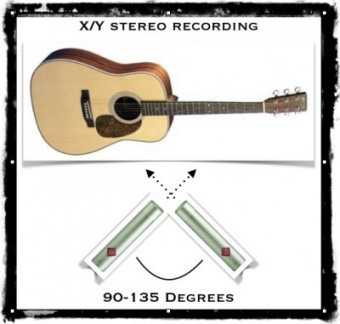
How to Mix the Signals: (same as A/B stereo recording)
How it should sound: Compared to A/B stereo recording, this technique will have less of a stereo effect. The reason is that since both microphones are positioned at the same point in space, there will be no differences in timing.
The entire stereo effect will be created from the differences in frequency balance. The upside to this is there are no issues with mono phase cancellation either.
3. ORTF Stereo Recording
Mics used: Two directional mics, usually small diaphragm condensers
Positioning: Spread outward at an angle of about 110 degrees, with the capsules spaced 17cm apart.

How to mix the signals: (same as A/B stereo recording)
How it should sound: The technique is basically a combination of the previous two. The microphones are physically spaced apart, like with A/B recording, which will yield a wider stereo image. Then it uses directional mics, like with X/Y recording, so it should pick up less of the ambient room sound.4
4. Blumlein Pair
Mics used: two figure 8 (bi directional) mics
Positioning: (same as X/Y technique)

How to mix the signals: (same as X/Y technique)
How it should sound: Compared to the X/Y technique, the Blumlein Pair technique captures a greater portion of the room sound and adds a bit more ambience to the stereo image, thanks to the use of the figure 8 mics.
5. Mid/Side Stereo Recording
Mics used: One small diaphragm condenser mic – either cardioid OR omnidirectional.
One large diaphragm condenser mic – MUST BE FIGURE 8
Positioning: The figure 8 mic is placed sideways at a 90 degree angle from the instrument. This mic will record sound on both sides and will function as the “side” in the term mid/side.
The other mic is positioned on top or below the figure 8 mic, and is pointed directly toward the instrument. It will function as the “mid” in the term mid/side.
How to mix the signals: This part is complicated. Follow the steps carefully.
Duplicate the “side” channel
Reverse the polarity of the duplicated channel
Combine the two side channels onto one stereo track
Mix in the mid channel with stereo side channels to adjust the width. The greater level of the sides compared to the mid, the greater the stereo width.
How it should sound: Mid side recording may be complicated, but it offers all the advantages of the other 3 techniques, without the downsides.
It offers the added stereo width of the A/B technique
It offers the mono compatibility of the X/Y technique
And it allows you (if you want) to increase the room ambiance to something resembling the Blumlein Pair techniques.
When Mono is More Appropriate than Stereo
While stereo recording applied in the right situations can improve the quality and interest of your mixes by leaps and bounds, there are some situations when it is simply not appropriate.
Certain instruments that you record will sound better in mono almost 100 percent of the time.
And here are the most common 4:
Lead Vocals – which is expected to be located at center stage. For that reason, it is typically recorded in mono.
Snare Drum – which is also expected to be at center stage. It would sound quite odd if it was located off to one side of the stereo image.
Kick Drum – which should be recorded in mono because its heavy low frequency content requires a lot of power to reproduce on speakers. In order to get the maximum output from the mix, it’s best that the work be shared equally by both the left and right channels.
Bass – which is also made up mainly of low frequencies so it generally works better in mono as well. Another reason for this rule is that our ears are not good at obtaining directional information from low frequencies, so it makes little sense to create a stereo image for any low frequency instrument.
heads up. i would advice you to explore in these techniques, try them out and see whats suitable for YOU.
as for recording and musical instruments, dont buy the most good looking ones, buy the ones with good quality and material.
goodluck.
0 notes
Text
Essential sound equipment and techniques needed to produce a professional production ✔
essential sound equipment
1. Microphones
As a piece of essential audio equipment, start with one mic but definitely plan to add more. Using different mics for different situations is practical, and having a spare mic as a backup is smart. Plus, if you’re recording multiple hosts or sit-down interviews, a matched pair of microphones (i.e. two mics of the same brand and model) provides a consistent sound.
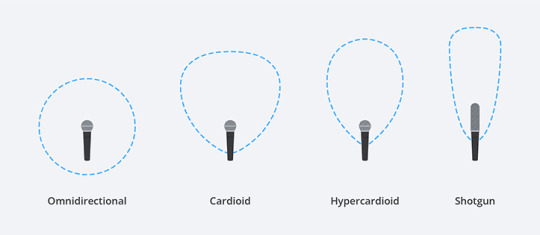
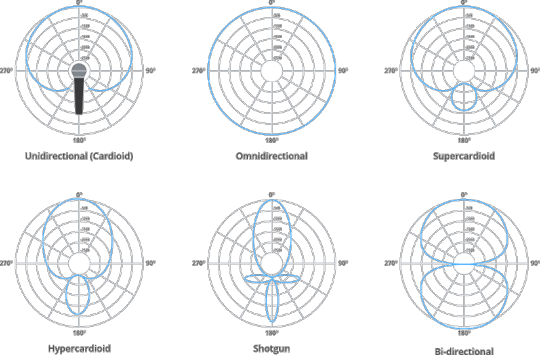
Whatever mic you choose, select a pickup pattern that’s best for your situation. In noisy environments or when you have several mics close together, a directional (cardioid) mic offers better isolation than omnidirectional (360⁰). For applications where loud speakers or noise isn’t an issue, an omnidirectional mic can be beneficial. Their tonal qualities are generally more natural sounding. A shotgun pattern, on the other hand, is great for capturing voice with some room ambiance for that “live on-location” sound with controlled directionality.
2. Audio mixer with EQ
Even for simple screencasts, an audio mixer with EQ is a piece of essential audio equipment. Sure you could use an audio inserter to match the signal levels of your mic with the inputs on a computer and provide a little gain, but a small mixer can do that and more. Mixers have gain control, tone adjustments, noise reducing filters, offer a variety of different inputs and outputs, and more.
The cost for a mixer depends on brand, quality (i.e. how much noise is introduced to the audio signal), and features. A small compact mixer that’s good quality for the price is the Soundcraft Notepad-8FX 8 channel mixer with USB. It has phantom power, high-pass (low cut) filter for noisy environments, and more. The Yamaha MG-10XU is highly rated with 10 channels, phantom power, plus a built-in compressor to smooth out the peaks and valleys for a more even signal. Brands like the Behringer Xenyx 1204USB also provide good value (at a lower quality).
For top brand names, consider the Mackie ProFX8v2 8-Channel Professional FX Mixer with USB or the 802VLZ4 if you don’t need USB. And if you absolutely want Soundcraft, the Signature 10 compact mixer is priced right with all the essential features like USB interface, phantom power, compressors, and more.
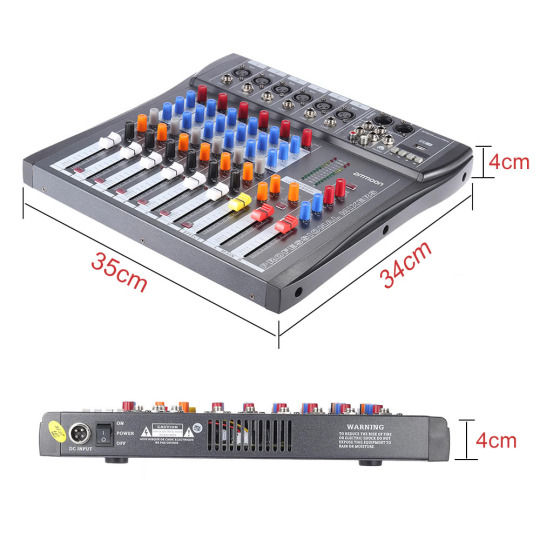
EQ mixer
3. Compressor / limiter
If you don’t purchase a mixer that includes a compressor and you’re recording people who don’t have mic training, a compressor is definitely a piece of essential audio equipment. A compressor evens out the audio signal by reducing the dynamic range to eliminate the big peaks and low valleys. It gives you a more even “polished” sound. A compressor can save your recording from being ruined by a few loud, distorted clips. A limiter is basically a compressor that’s set more aggressively. In a nutshell, a limiter helps protect equipment from dangerously loud volume spikes. It blocks signals that are above a set threshold – chopping off the tops of those peaks. If you’re worried about blowing speakers, a limiter is essential.

composer pro-XL
4. Headphones / monitors
Without a good pair of headphones, you’re mixing blind! Even when recording directly to your computer using an audio inserter or mixer, a pair of good headphones is essential to monitor your recording without fear of feedback. Comfortable earbuds can also work if you’re just monitoring voice and don’t want to see bulky headphones on camera. And unless you’re close to the headphone output jack, picking up a handy 3.5 m stereo male to 3.5 mm stereo female extension cable is useful.
Choosing monitor headphones is subjective and can be pricey. I suggest selecting a pair that feels comfortable and has a neutral sound over headphones that boost the bass or high end. AKG is known for their high-end studio headphones, but they do have budget pleasing models like the K240 and the K550. Other quality headphones that won’t blow your budget include the Audio-Technica ATH-M50x and Pioneer HRM-7m. For a bit more money, try the impressive Focal Listen Professional. There are, of course, the studio benchmarks like the AKG K18 Pro andSennheiser HD800.
Studio monitor speakers are great if you have a control room that’s isolated from your video studio space. It’s good to hear what your audio sounds like on speakers rather than just on headphones. Are studio speaker’s essential for a video training studio and screencasts? That depends on your application. But you could spend the money elsewhere, like a higher quality set of headphones. Some excellent studio monitors in the more affordable range include the IK Multimedia iLoud Micro Monitor, Yamaha HS5, and the RKR Rokit RP7 G4.

monitor / headphones
my opinion: i would prefer headphones/headset because it is more convinient when you would want/like to listen very closely to the audio.
5. Field recorders
You could record directly to software on your computer when doing screencasts, but consider using a hand-held field recorder for better quality. Field recorders are easy to use and very portable. Most connect directly to computers and cameras, making them a convenient audio recording solution.
A field recorder like a Zoom H4n Pro can even take the place of an audio inserter to get your mic audio into your computer while at the same time record a backup to an SD card. Add a headphone splitter to the audio output jack and feed audio to a set of headphones and into your camera’s 3.5mm external mic input for a completely portable audio recording solution. The Zoom H4n Pro has two XLR inputs with +48 V phantom, a 3.5 mm Plug In voltage input, USB, line/headphone output, plus two built in cardioid stereo microphones at the top of the unit for a total of four recording tracks. Only need a single track? There’s a Zoom H1n for that.
Many different models and less expensive brands exist. Another option is the Tascam DR-40X with many of the same features of the H4n Pro except the built-in stereo mics are omnidirectional. However, the preamps of the Tascam are noisier than Zoom. You may prefer the Tascam DR-100MKII. To directly record a lavaliere mic, the Zoom F1-LP is an option. This Zoom field recorder can also connect to a computer like an audio interface and to the mic inputs on a camera. If you need more powerful gain at the XLR mic input, look at the higher Zoom models such as the H5, H6, or the Tascam DR-60DMKII.


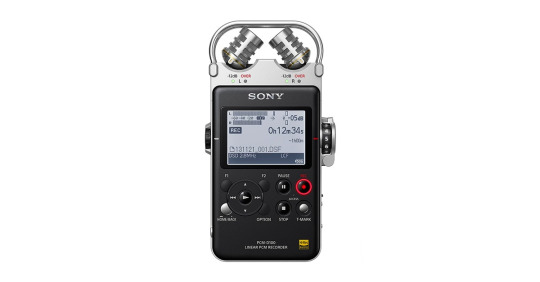
theres ore than 3 types of field recorders, 2 are from sony and 1 from tascam. all three are good quility but pick the best siutable for yourself.
FOR MORE DETAILED INFORMATION AND MORE ESSENTIALS VISIT THIS LINK ---> ----> https://www.epiphan.com/blog/essential-audio-equipment/
0 notes
Text
Essential sound equipment and techniques needed to produce a professional production ✔
LET'S START OFF WITH SOUND/AUDIOS.
You can tell audio needs to be improved when you hear:
+Hum +Buzz +Hiss +Room reflections (echoes from the recording room) +Microphone handling, bumping sounds +Other foreign sounds: animals, lawnmowers, keyboard clicks, etc. +“Plosives” (the explosive sound consonants make when spoken into a microphone) +Extreme audio processing (audio effects that create an unnatural sound)
On the other hand, quality audio can be defined in one word: natural.
Here are a couple guidelines about microphones to avoid:
The headset microphone that came with your smartphone. While those are great for appearing live on Facebook, they’re not ideal for podcasting.
A condenser microphone. They’re made for the acoustics in big, fancy, recording studios.
Unless you’re planning to build a recording booth in your garage, leave these microphones in the store.
Some podcasters like to record with the microphone in their hands. Unless holding the mic is absolutely necessary, avoid that technique.
Another common microphone-stand mistake is connecting it to a surface your hands or feet easily touch. If it’s a desk-mount stand, try connecting it to a nearby piece of furniture that’s not touching the desk. Or, if it’s a floor-mount stand, make sure the feet rest on carpet or padding.
Otherwise, the small movements you make during recording can transfer up the stand and into the microphone, which produces distracting sounds.
Before you record, double-check that your room doesn’t reflect your voice back into the microphone. Carpet, furniture, wall decorations, and non-parallel walls all help calm the reflections. Trying a smaller room, or even a closet, is often easier than acoustically treating your current recording space.
You should also keep outside noises to a minimum. Common offenders are:
Fans Refrigerators Furnaces Cars Phones and other electronics Open windows
0 notes
Text
pros and cons on some brands
rockvlle 1000watt 2-way
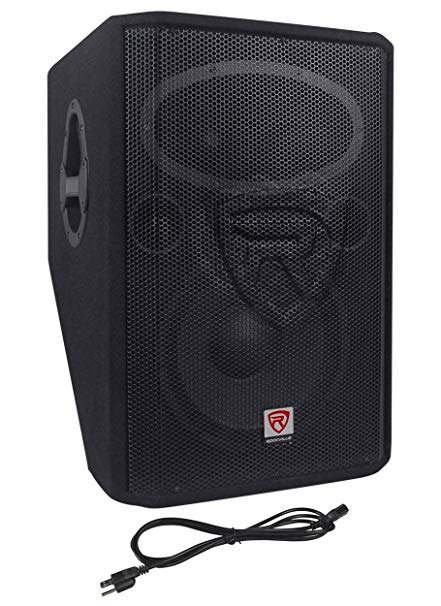
If you’re looking for a high-end, powerful stage monitor that offers your high-performance, then this might be one of the best stage monitors for you. It has a remarkable peak power of 1,000 watts, and the RMS wattage is 250w, and this is built into the monitor.
The quality is assured because the stage monitor is hand built, and it is constructed from high-grade materials too. Another nifty feature is that it includes an adjustable feedback filter so that you won’t get any of that irritating feedback that you can find with lower quality stage monitors.
Pros: + Feedback filter + 1,000 watts of peak power + Handbuilt + Can be pole-mounted + Offers deep bass
0 notes
Text
pros and cons on some brands
powerwerks pw4 50 watt personal pa monitor
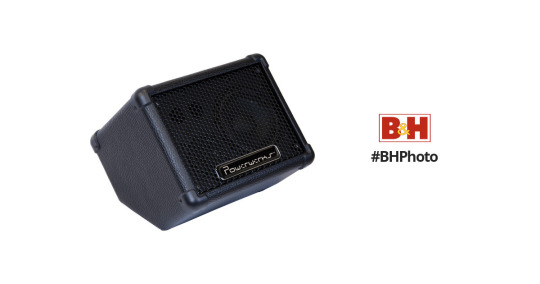
This is a great stage monitor that is incredibly compact, but still capable of offering a huge amount of power. At only 10.5lbs, it is very portable and transportable for gigs, and it can also be easily mounted to a mic stand, for even better monitoring during concerts.
Then again, the 50-watts of power make it just as suitable as a PA for a small gig too. You can connect it to a microphone through the mic input, but it can also be connected to a mixing board or monitor feed through the line input.
pros: + Huge sound + Compact and lightweight + Mic and line input + Great price + 50-watts of pow
0 notes
Text
pros and cons on some brands
seismic audio small sa-10m single wedge monitors.

seismic introduced its first speakers back in 2001, and since then they have become a well-respected manufacturer of all sorts of audio equipment. This budget studio monitor will give you a peak power of 200 watts. It includes a piezo horn tweeter and a woofer that has a 2-inch voice coil inside it.
It is easy-to-carry and since it only weighs just over 20lbs, then it is portable too, which is ideal for a gigging singer. The sound is both clear, as well as rugged too. It has dual ports. And the grill is 18-gauge and made from steel.
Pros: + Great value-for-money + Portable + 200-watts of peak power + Dual ports + Light
0 notes
Text
Stage monitor designs
Now you know the differences between powered and unpowered monitors, you still have to tackle a few more considerations. One of the most practical among these is the form factor that best suits your monitoring needs.
Here, we’ll take a look at different monitor designs and the situations in which they work best.
stage wedges
A popular, low-profile design for monitoring, stage wedges are a cabinet type that sits on the stage floor and is angled upward toward the performer without blocking the audience’s view. Among the most common monitor designs, the wedge is well suited for situations where each member of a group has a dedicated monitor.
in-ear monitor
For some players, a monitor mounted on the stage simply doesn’t offer the needed flexibility, clarity or mobility they want. For these performers, in-ear monitors can be an excellent option providing precisely the mix they want.
Built for even and accurate response across frequencies, ear-bud style monitors like theMackie MP-240s are becoming a popular option for bands playing venues of all sizes.
side fills monitors
ideally used as a complement to individual wedge monitors, side fills sit just offstage and deliver a complete mix that the entire group an hear. these speakers offer a fuller mix that can help musicians deliver more solid performances. however, as individual wedge monitors have improved, the need for these more elaborate systems is becoming less common.
stand-mounted
as an alternative to the wedge-style that sits on the floor, monitors can be stand mounted. while this ma be visually more disruptive, in some monitoring situations particularly for keyboard players-they may be ideal. stand mounted monitors ay also make sense in brands where performance share monitors
0 notes
Text
TYPES OF STAGE MONITORS
When you browse the complete selection of stage monitors at Musician’s Friend, you’ll see lots of different brands and types available. Models vary in size, structure, and specifications. However, they all fall into one of two main categories: unpowered and powered stage monitors.
Let’s take a look at the differences between these categories, as well as their pros and cons.
Passive (unpowered) stage monitors
The bands signal needs to be boosted through a power amplifier. whether they are a large, front-of-house speaker array or an onstage monitor. Active or powered stage monitors house their power amp in the same cabinet as the speaker drivers Those that need external amplifiers are referred to as unpowered or passive monitors.
Powered (Active) stage monitors
In contrast to unpowered monitors, which rely on external amplification, powered speakers have their amplifiers built right into the box. For some applications, and especially in cases where musicians need to supply their own monitors, this type of monitor can offer some significant advantages.
Even though the price of a powered monitor is usually higher than that of an unpowered model, the total cost of the amplifier and speaker combination can be lower than buying these items separately. The Galaxy Audio PA6BT, for instance, offers 170 watts of power, on-board EQ, and two-way monitoring functionality for less than the cost of many dedicated power amplifiers.
Many vocalists and other musicians prefer more traditional wedge-shaped floor monitors that are aimed upward. The Kustom KPC10MP earns high marks for its rugged build quality and a very intelligible 10” speaker plus piezo horn that singers especially like.
Aside from the practical considerations of cost and portability, quality powered monitors can have some advantages in sound quality, with greater dynamic range and high volume capabilities without as great a need to worry about blown speakers
0 notes
Text
Noise-Cancelling Headphones
As the name suggests, the noise-canceling headphones are those that are designed to filter out background noise to deliver foreground sounds of crisp clear quality. To do this, they employ many techniques for soundproofing and blocking of stray noises. The end result is deeply immersive and clear sounds.
Even though these headphones are great, they might let you lose touch with reality and even involve yourself with accidents. That is because they completely shut you out from the goings-on in your environment. You want to avoid them while on the go.

Wireless Type:Bluetooth
Waterproof:No
Active Noise-Cancellation:Yes
Support Memory Card:No
Sensitivity:116dB
Plug Type:Line Type
Model Number:T4S
Is wireless:Yes
Support APP:No
With Microphone:Yes
Support Apt-x:No
Connectors:Type c
Resistance:16?
Volume Control:Yes
Line Length:1.5M
Communication:Wireless+Wired
Vocalism Principle:Dynamic
Style:Headphone
0 notes
Text
Bluetooth Headphones
These are special kinds of headphones which draw in signals from the source purely through Bluetooth connectivity rather than cables. This wireless nature reduces clutter and diminishes the likelihood of tripping or falling in the course of use. They are also more convenient to utilize on the whole compared to their wired counterparts.
Their major downsides though is the fact that they are prone to the risks of signal interferences. This is especially when many other wirelesses are used in their vicinity at the same time. The quality of the sound output may also be compromised.

Bluetooth technology for unwired freedom and convenience.Connectivity Technology: Wireless
Closed type acoustics provide good sound isolation
Adjustable ear shells and headband fit everyone
Wireless control and enjoyment of music and calls
Soft breathable ear cushions for long listening sessions
0 notes
Text
Earbuds
Earbuds are very small ‘headphones’ which are inserted in the ears. They are often wireless in nature and are used for non-invasive listening of the sound and audio output. Generally speaking, they are smaller and hence take up less space. For this reason, they are suitable for on-the-go applications and circumstances of use.
Just like their in-ear counterparts, they are not so hygienic to use as they easily spread germs when shared from one person to another. They may also pose some damages to the eardrums when worn and used for longer. You have to use them moderately.
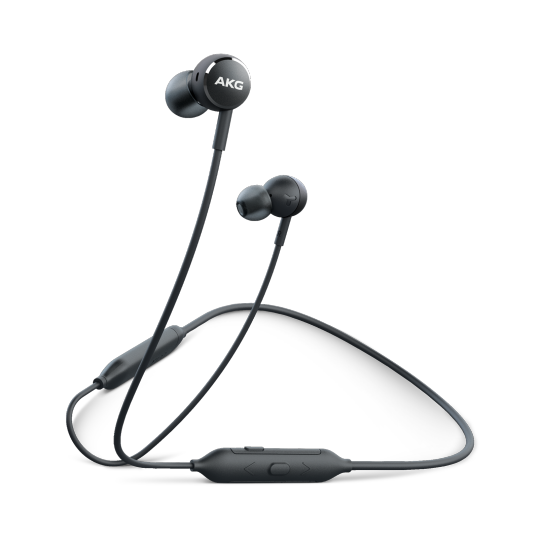
0 notes
Text
In-Ear Headphones
In-ear headphones are also called canal phones or in-ear monitors (IEMs). They are so called because their tips are inserted in rather than over or around the ears. They channel sounds directly into the eardrums and are as such pretty effective. These kinds of earphones are compact in size and are hence suited for use on the go.
If you intend to share the earphones, you are advised against this kind of appliance. That is because they easily pick up dirt in the ears and may hence spread the germs easily. Their sound output is also not so great as compared to the other alternative
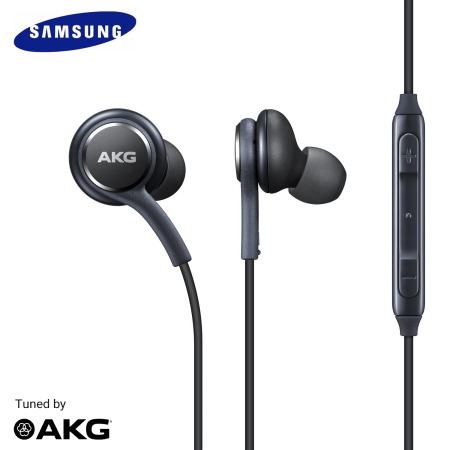
Enjoy your music with this official pair of Samsung Tuned By AKG In-Ear Stereo Headphones. With a built-in remote, this headset is ideal for use with smartphones or tablets and great for controlling your music and calls on the go.
0 notes
Text
over ear headphones
Over-ear headphones are also called circus-aural. This is to mean that they go over and around your ears thus enclosing them tightly. With this arrangement in mind, they do have some great bass responses. This is not to mention that they also have the largest sound stage.
This is the headphone to go for if you intend to listen to music for a prolonged duration of time. They do have a serious drawback in that they predispose your ears to sweat and some discomforts if improper padding is used to make them up. Due to their better shape and form, they are costlier and may even require some amplifiers to work well.

Open Back
Mixing, Mastering, Music Production
Large 53mm Transducers
1.5 Tesla Magnet System
0 notes
Text
on ear headphones
Also called supra-aural, these are special headphones which are designed to cover the entire ears. They are as such much larger than the standard earbuds. They are however smaller and more compact when compared to the over-the-ear counterparts.
When worn on the ears, they completely immerse you in the sound output and minimize the leaks. This leads to minimal interferences with those around you and is hence great for use in public places. By their sheer sizes, they are larger and bulkier to handle. You will find them quite uncomfortable when worn for long.

Compact closed back, on-ear design isolates ambient noise to maximize musical enjoyment.
Headband and layered foam ear pads are covered with super soft, breathable and durable Alcan Tara providing comfort and a perfect fit.
18-ohm operating impedance produces outstanding bass response, dynamics and overall output level with portable audio devices
Metal in-line three button control and microphone supports Apple devices like iPod, iPad and iPhone.
2 year global warranty
0 notes